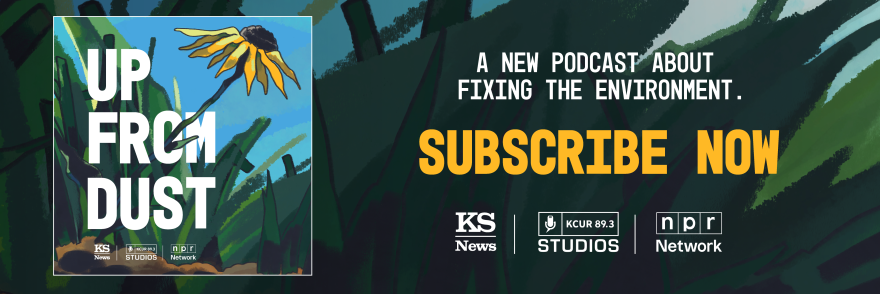It’s Environment 101: Trees help save the planet.
But not everywhere.
Yes, they suck carbon dioxide out of the air and store it in forests — just what the doctor ordered for an industrialized atmosphere coughing on too many greenhouse gases.
But new research clarifies that deploying trees against global warming backfires in parts of the U.S. and Canada, including much of the Great Plains.
“Trees are great in the right place,” said Susan Cook-Patton, a senior forest restoration scientist at The Nature Conservancy. “But they’re not uniformly awesome across the globe.”
Trees darken the ground. So a place that otherwise would reflect more sunlight and send some of its heat straight back into outer space instead soaks up that heat. In some regions, this outweighs the trees’ potential carbon storage.
This is the case for many grasslands, meaning that the dense, dark juniper trees spreading west across the center of the country can cost the landscape more of its valuable reflectivity than the trees’ carbon-sucking capabilities are worth.

That adds urgency to grassland conservation efforts. Prairies are vanishing beneath a rapidly spreading blanket of woody plants that threatens rancher livelihoods, makes wildfires worse and eliminates habitat for grassland wildlife.
Scientists in Oklahoma have dubbed the phenomenon that is gobbling rangeland from Texas up into the Dakotas the “Green Glacier.” Humans triggered the Green Glacier through a combination of changes to the environment.
Why do trees backfire on the Great Plains?
It’s like standing in the sun on a hot summer day in a white t-shirt instead of a black one, Cook-Patton said. The darker your clothes, the more you’ll feel the heat.
The portion of sunlight that bounces back into space is called albedo.
Trees warm the planet in places where they reduce the ground’s reflectivity a lot, and don’t capture enough carbon to offset that problem.

Trees cool the planet in places where they pack away a lot of carbon and don’t change albedo very much, such as regions that aren’t very reflective anyway.
“Our work in general suggests that adding trees to Kansas grasslands provides limited to no climate mitigation,” Cook-Patton said.
Adding trees to some parts of eastern Kansas can have a cooling effect, but the trees change the color of the surface so much that this will “undercut the benefit of the carbon storage quite substantially.”
In the drier western half of the state, adding trees has a warming impact on the climate.
Ultimately, many factors play into the net effect of trees. That includes, for example, the color of the soil, the rain and snowfall patterns, the kind of trees that thrive there and the transparency of the atmosphere. (Atmospheric transparency varies globally.)

As it turns out, rebuilding forests is often a great idea where they existed historically in recent centuries, such as in the Pacific Northwest and many eastern states. Adding forest is generally a bad idea in places that were historically prairie.
The authors found that adding trees is negative for the climate in most temperate grasslands, savannas and shrublands globally.
They created a tool to help decision-makers anywhere in the world understand both sides of the equation — the carbon impact and the albedo impact.
This makes it easy to see where restoring forests pays off.
The authors hope that will help agencies working across big geographic scales — such as a country or state government — to hone their reforestation efforts.
It could also allow planners of carbon storage projects to calculate more accurate estimates of how much climate benefit any given tree-planting project would offer.

What about other benefits of trees, including in cities?
Urban areas offer one illustration of the complexity of deciding where to plant trees.
Cities want trees for a whole host of benefits to their residents that the authors of the albedo study agree are important and worthy. Those benefits range from improving air quality to shading streets from brutal summer heat.
But the authors of the study, published in the journal Nature Communications last month, note that actions to combat climate change and actions to help us live in a warming world aren’t always the same.
“Trees can make it cooler locally,” said geography professor Chris Williams, director of environmental sciences at Clark University in Massachusetts, “but still warmer on a planetary scale.”
Cities aim to beef up their urban tree canopies to mitigate heat from pavement and to absorb air pollution, both of which improve local human health and quality of life.
Trees can also benefit water quality, prevent erosion and feed wildlife.
That means decision makers in parts of the country where trees are climate-negative have to consider many factors when deciding whether to plant them.
Celia Llopis-Jepsen is the environment reporter for the Kansas News Service. You can follow her on Twitter @celia_LJ or email her at celia (at) kcur (dot) org.
The Kansas News Service is a collaboration of KCUR, Kansas Public Radio, KMUW and High Plains Public Radio focused on health, the social determinants of health and their connection to public policy.
Kansas News Service stories and photos may be republished by news media at no cost with proper attribution and a link to ksnewsservice.org.








